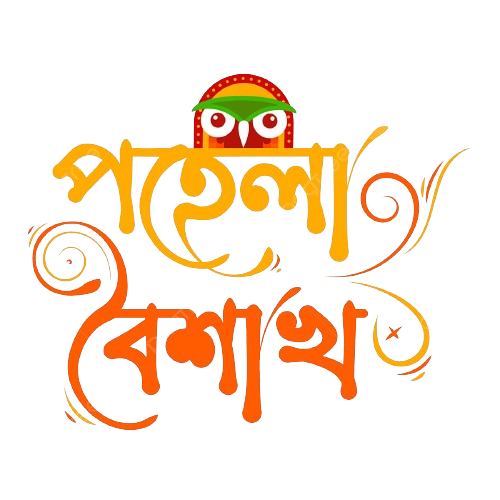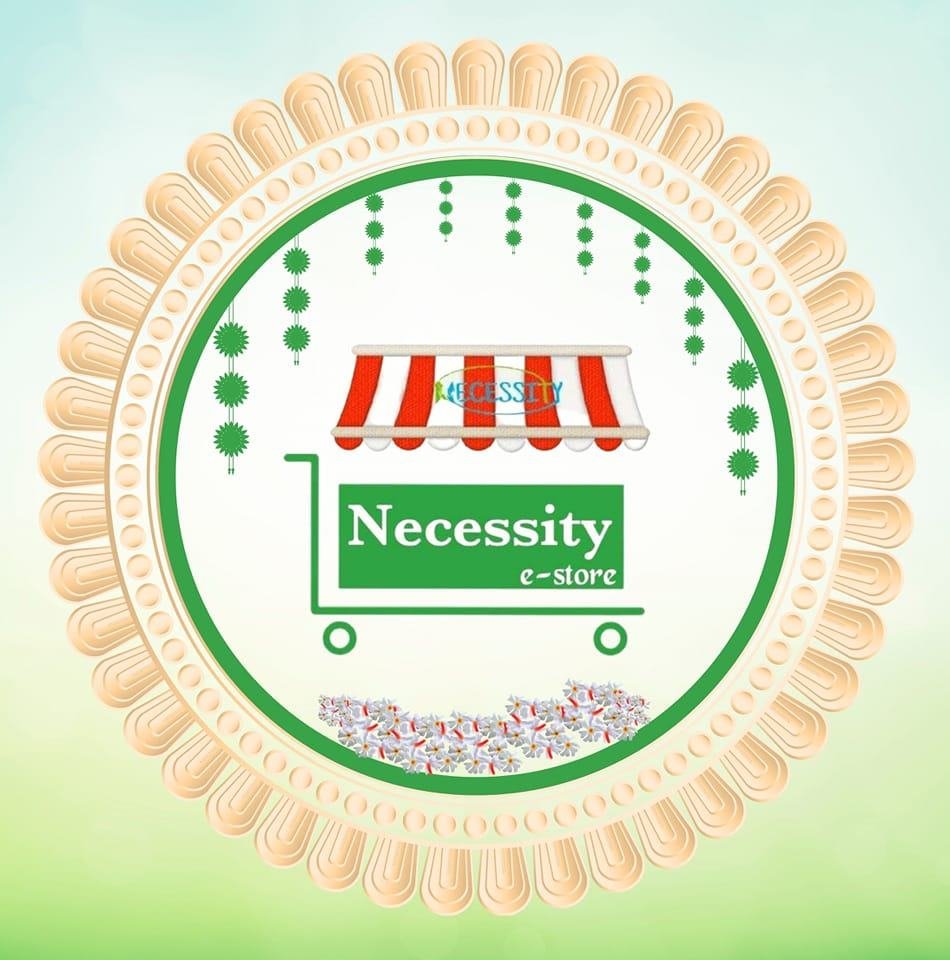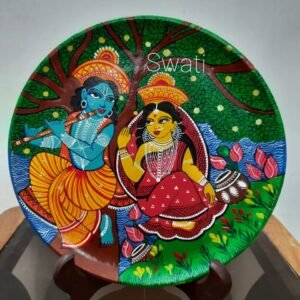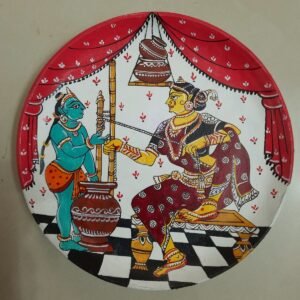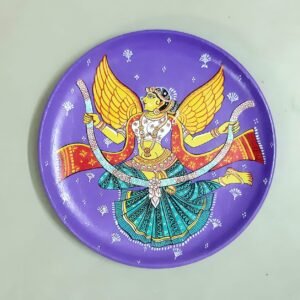Patachitra

Patachitra - History on cloth
Patachitra or Pattachitra is a general term for traditional cloth-based scroll painting of the eastern Indian states like West Bengal & Odisha. In Sanskrit, Pata means ‘cloth’, chitra means ‘picture’ or ‘painting’.
This is one of the ancient artworks of India, originally created for ritual use and as souvenirs for pilgrims to Puri, or other temples in Odisha. There exists a good number of paintings from 18th century onwards in many temples and Mathas especially in the southern districts of Odisha. In Bengal narrative art was used as visual device during the performance of songs like Patua Sangeet. Practice originated from small villages of Midnapore, Bankura, Purulia, Howrah, Hooghly and 24 Parganas.
Patachitra - Regions
Bengal Patachitra is different from that of the Odisha one. It is a traditional and mythological heritage of West Bengal. The Bengal one is divided into some different aspects like Durga Pat, Chalchitra, Tribal Patachitra, Medinipur Patachitra, and Kalighat Patachitra. Ajitcoomar Mookerjee has mentioned that there are some Jadu-Patuas painting of mural style in the temples of Bankura District(Folk Art of Bengal). There are many types of Pots like religious, secular, historic(Describes the galant tales of old kings). Religious pots encompass the mythological story of Hindu epics like, Ramayana, Mahabharata, Radha Krishna, Kali, Shiba and the indigenous Bengali folklore of Manasha and Chandi, Behula and Lakshinder being the most popular. Chalchitra is referred to the Debi Chal or Durga chala, the background of the Durga Pratima or idol. Patua, the artists of Chalchitra called it as Pata Lekha, means the writing of Patachitra. 300–400 year old idols of Nabadwip Shakta Rash used Chalchitra as a part of Pratima. Durga pot or Durga sara is worshiped in the Hatsarandi Sutradhar society of Birbhum district on Durga puja. Krishnanager Rajrajeshwari Durga is known for their Shib and Parvati in the middle of Dasha-mahabidya and Dashabatar pathchitra.
This artwork possess unique colour in different districts of West Bengal. The shade of burnt sienna relieved by white and yellow patches make patachitra of Purulia distinguishable. In the scrolls of pot of Birbhum, Bankura and Burdwan preference for Indian red background usually found, the scrolls of Hooghly preferred a dark brown.
Patachitra- Art of India
The artist of the Bengal Patachitra is called Patua. Bengal Patua artists of Naya in Medinipur carry the occupational surname of ‘Chitrakar’. Prominent artists include Khandu and Radha Chitrakar. Monimala is known for her use of bold, iconographic style. “The Kalighat Patachitra”, the last tradition of Bengal Patachitra is developed by Jamini Roy.
Patachitra of Naya village in West Bengal is now collected in National Museum of Ethnology (henceforth MNE) in Lisbon. This artwork not only tell stories of mythology buut also they carry the hardwork of small patua families. Give your dining a chance to feel the essence of tradition through one elegantly painted cloth.
Thank you.
Related Products
-
PataChitra Painted Radha
₹1,800.00Original price was: ₹1,800.00.₹1,612.00Current price is: ₹1,612.00. -
Patachitra Hatpakha -Handpainted Handfan – 11.5 inch
₹499.00Original price was: ₹499.00.₹339.00Current price is: ₹339.00. -
Patachitra plate Radha Krishna
₹2,000.00Original price was: ₹2,000.00.₹1,982.00Current price is: ₹1,982.00. -
Patachitra Wall-hanging plate
₹2,000.00Original price was: ₹2,000.00.₹1,365.00Current price is: ₹1,365.00. -
PataChitra Handpainted plate
₹1,800.00Original price was: ₹1,800.00.₹1,612.00Current price is: ₹1,612.00. -
Patachitra Kettle
₹1,299.00Original price was: ₹1,299.00.₹1,009.00Current price is: ₹1,009.00. -
Fish Patachitra Wooden Tray
₹999.00 -
FAQ's
As they are made from thick cloth so there might be a chance of catching damage from water. But there no chance of color fading.
Yes hanging or framed pats are one of the best wall decor out there.
Pats come various different colors but browns & bright colors are most used.
Depends on the product.
Pats are not at tall heavy but Patachitra is drawn on plates or glasses the weight depends on the base canvass product.
No pats are not fragile it’s very difficult to tore apart a Patachitra. But it’s also depends on the base canvass product.
It’s completely safe. But it never bad to be a little careful.
Dusting with a clean dry cloth once in a while is enough.
